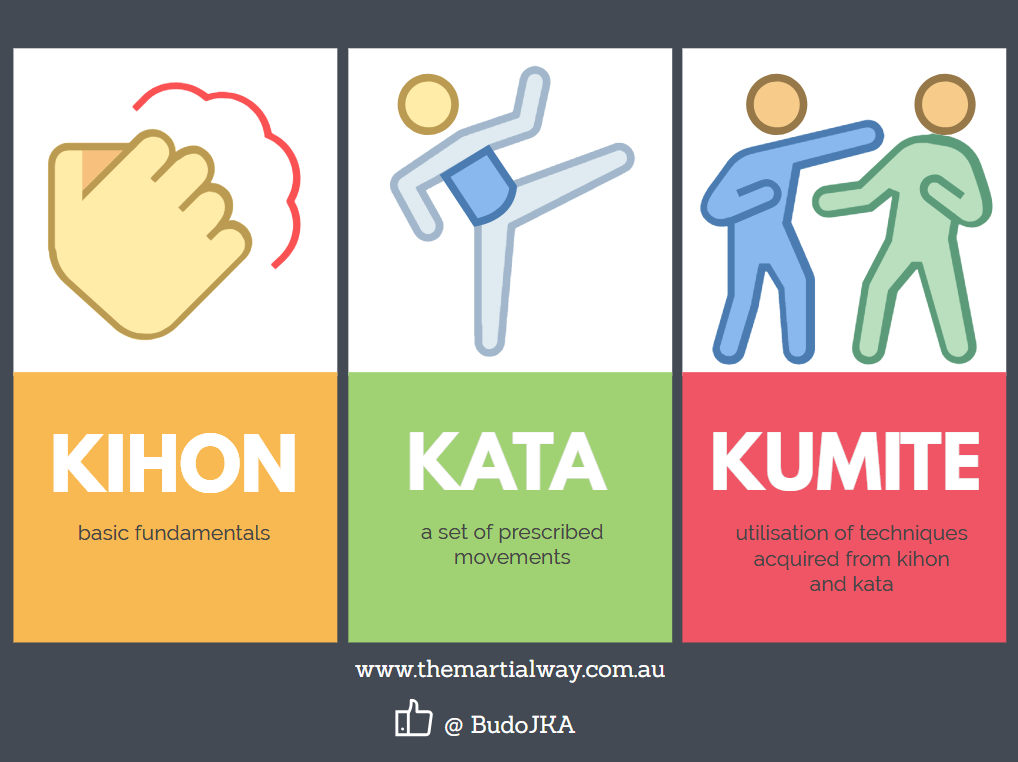Kata, Kihon, and Kumite are three important elements of Shotokan Karate training. These three elements of Shotokan Karate training work together to develop well-rounded martial artists who possess strong technical skills, mental focus, and physical fitness.
1.Kata are pre-arranged patterns of movements that simulate self-defense against multiple attackers. These movements are performed alone, and are considered the "forms" or "dances" of Karate. Shotokan Karate has around 26 katas. Kata is used to practice and perfect basic techniques, and to develop power, speed, and balance.
2.
Kihon means "basic" or "fundamental." In Shotokan Karate, kihon refers to the basic techniques such as strikes, kicks, blocks, and stances. These techniques form the foundation of all other training in Shotokan Karate, and are practiced repeatedly to develop proper technique and muscle memory.
3.
Kumite means "sparring." In Shotokan Karate, kumite refers to the practice of applying techniques learned in kihon and kata in a live, sparring situation. Kumite is typically done with a partner, and can be either pre-arranged or free-style. It is used to improve the timing, distance, and reaction of the student. The goal is to develop the ability to use techniques effectively and safely in a real-life situation.

These three components of karate training are considered fundamental to the practice and development of traditional karate. They are interrelated, and each one supports and complements the others.

